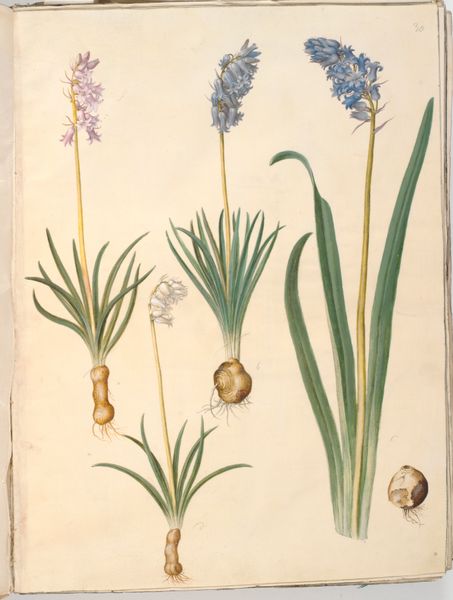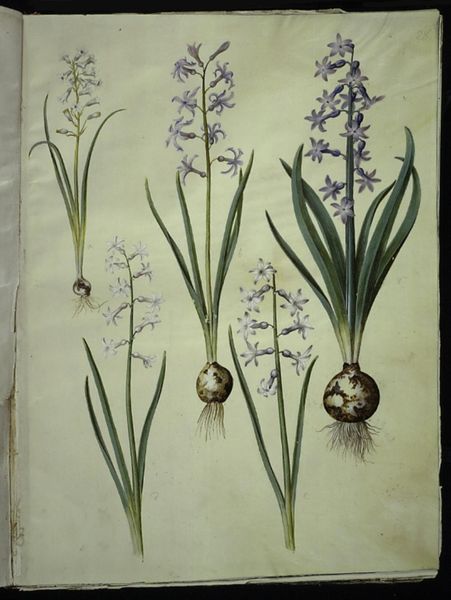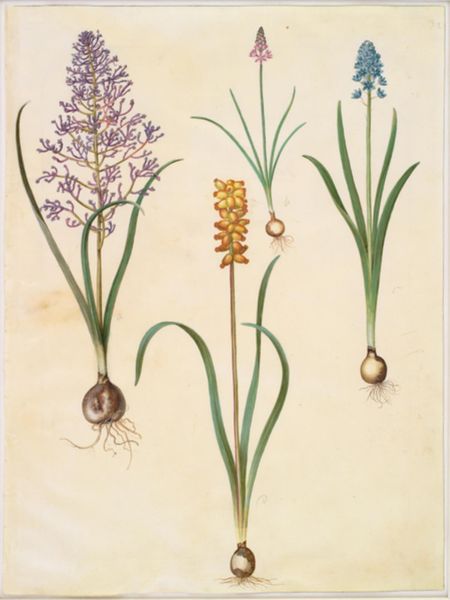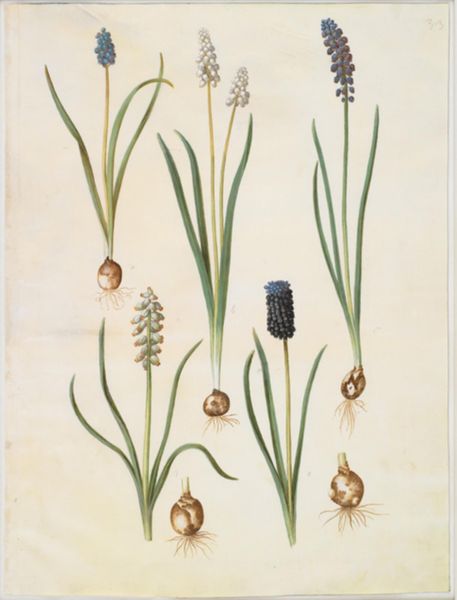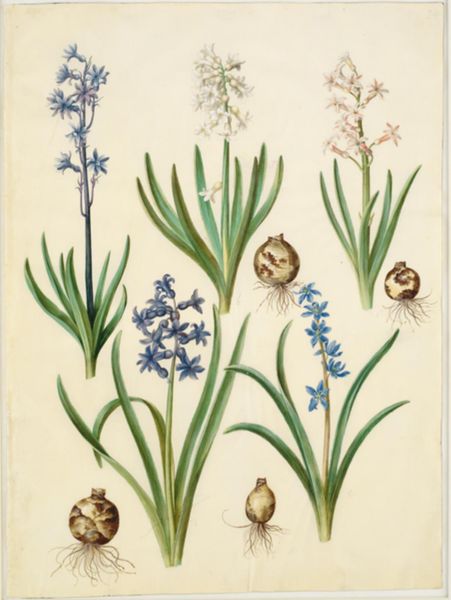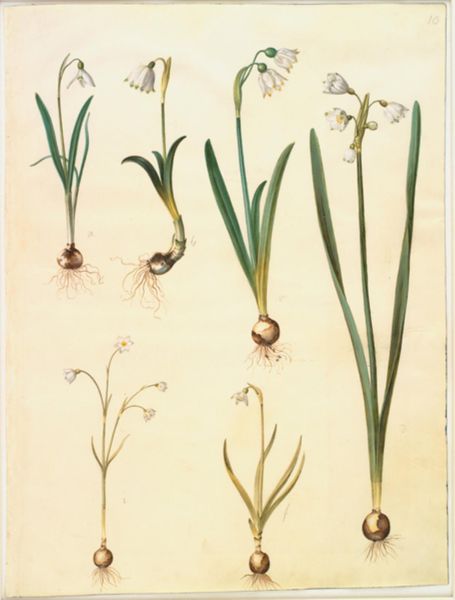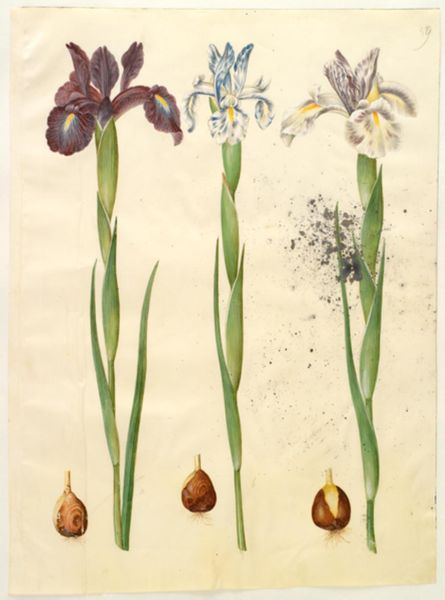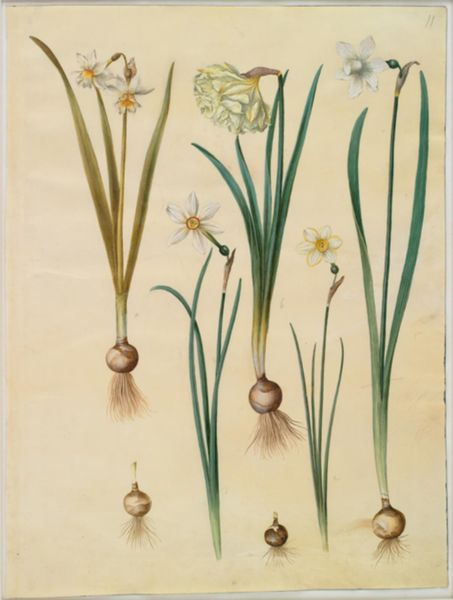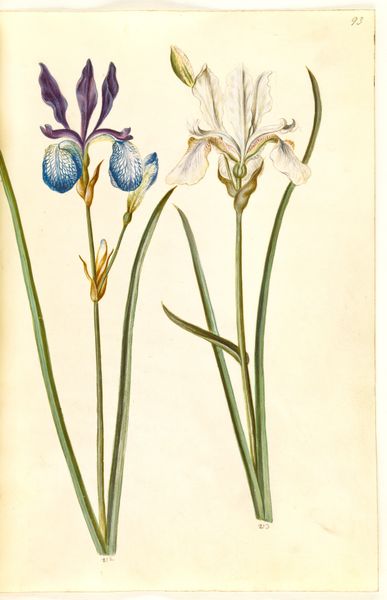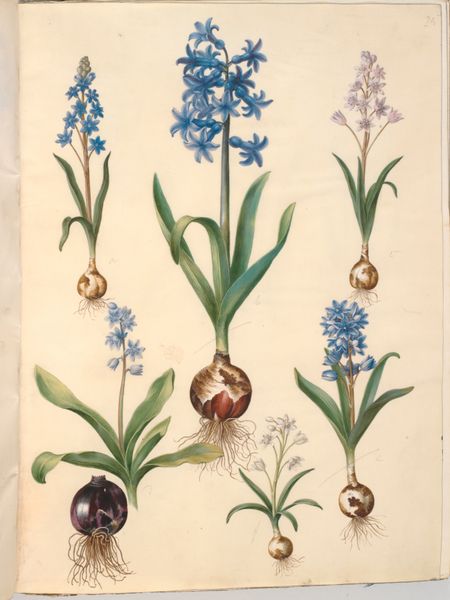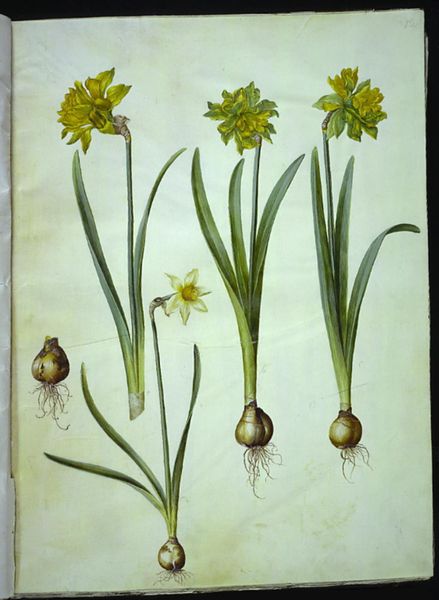
Hyacinthus orientalis (almindelig hyacint) 1649 - 1659
0:00
0:00
drawing, gouache, watercolor
#
drawing
#
gouache
#
watercolor
#
academic-art
#
watercolor
Dimensions: 505 mm (height) x 385 mm (width) (bladmaal)
Curator: What immediately strikes me is the almost clinical, taxonomic arrangement. The clarity is beautiful. Editor: Indeed. What you’re looking at is "Hyacinthus orientalis (almindelig hyacint)", a watercolor, gouache, and drawing artwork created between 1649 and 1659 by Hans Simon Holtzbecker, currently held at the SMK, the National Gallery of Denmark. Curator: So, a time of burgeoning scientific illustration. That makes sense given the composition’s precision, it's clearly about conveying exact detail. Editor: Absolutely. Botanical illustration was gaining prominence during this era, moving from simple identification aids to objects of considerable artistic merit and social status. Think of the Dutch tulip mania and the immense value placed on accurately depicting rare blooms. This reflects an emergent culture deeply intertwined with visual documentation and global trade in the early modern period. Curator: Notice also how each of the three hyacinths, each with its distinct coloring from blue to green and white, are rendered with equal weight and detail. No hierarchy, no preference, just precise observation. Holtzbecker meticulously captured the texture and form; the veins in the leaves, the minute flowers… Editor: I'm drawn to the grounding that the artist has provided, especially focusing on the bulb and root system for each example. What do you feel Holtzbecker is trying to emphasize for the viewer in including this anatomical detail? Curator: Including the root structures demonstrates an understanding of botany, emphasizing the whole life cycle. Beyond mere aesthetic delight, the illustration offered valuable scientific insight during an age of discovery, where accurately depicted flora held immense political and commercial value. The work speaks to a society hungry for knowledge and expanding its dominion over the natural world through systematic observation. Editor: Yes, viewing this artwork is far more than seeing simply beautiful flowers; it gives us a window into a world transforming itself through science, commerce, and art. Curator: A testament to the power of careful observation in a pivotal era, don’t you think? Editor: Undeniably; a lovely collision of beauty and nascent scientific methodology.
Comments
No comments
Be the first to comment and join the conversation on the ultimate creative platform.
